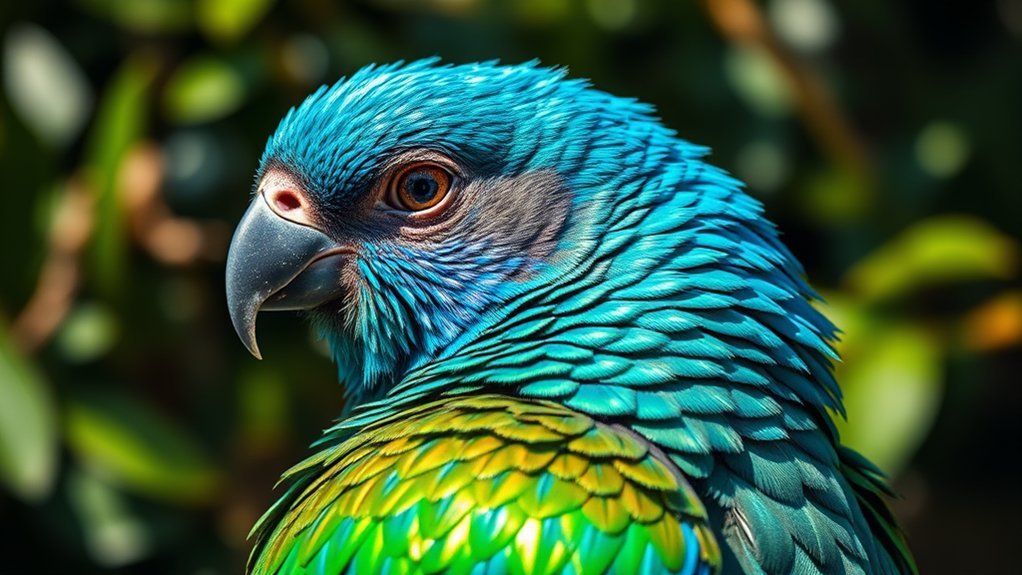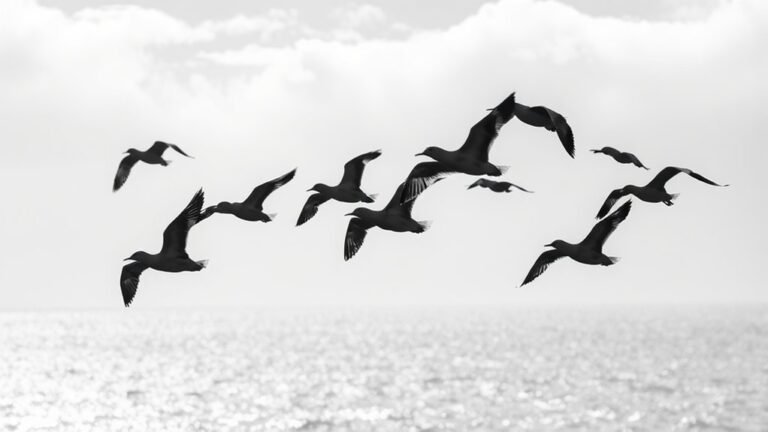World’s Most Rare Bird: A Closer Look at Endangered Species
The world's rarest birds are important for our ecosystems. They reflect the health of their environments. Their survival depends on interactions with their surroundings. Unfortunately, many of these birds are at risk of extinction because of human actions. By understanding their specific challenges, we can find solutions for their conservation. What creative strategies can we develop to help protect these vulnerable species?
Key Takeaways
The Spix's Macaw is the rarest bird in the world. It is extinct in the wild. However, conservationists work hard to bring it back through dedicated efforts.
Endangered bird species, like the California Condor, show signs of environmental problems. These birds highlight the decline of their ecosystems.
Rare birds have unique traits. They often have special sounds and specific nesting habits. These behaviors help them avoid predators.
Several threats endanger their survival. Habitat destruction removes their homes. Climate change alters their environment. Urbanization affects the areas where they breed and feed.
Conservation efforts focus on key actions. People work to protect habitats. Communities collaborate to preserve wildlife. Restoration projects provide safe spaces for these birds.
The Importance of Biodiversity

Biodiversity is the variety of life on Earth. It includes different species of plants, animals, and microorganisms. Biodiversity supports ecosystem stability and our economy. Each species has a role that helps maintain balance in ecosystems. A wide range of plants and animals makes habitats stronger.
These healthy ecosystems can better survive environmental changes and threats.
Genetic diversity within species is vital for their growth and survival. It allows populations to adapt over time. This connection to nature fosters a sense of belonging.
Top Endangered Bird Species
Many bird species face serious threats from habitat loss, climate change, and poaching. The California Condor and the Spix's Macaw are two species that highlight conservation efforts.
While bird watching, you might see other endangered species like the Whooping Crane or the Hawaiian ʻIʻiwi. These birds are vital to their ecosystems, and their decline indicates larger environmental problems.
We can help these amazing birds by taking action. Join conservation groups, raise awareness about their challenges, and enjoy the time you spend watching them.
Connecting with nature in this way enriches our lives and helps protect these fragile species.
Unique Characteristics of Rare Birds

Watching endangered birds shows their unique traits that make them special. Their calls are intricate and distinct. These vocalizations help them communicate and establish their territory. You can hear the passion in their voices, which vary even among similar species.
Their nesting behaviors highlight their adaptations. Some rare birds build nests in hard-to-reach spots to keep away from predators. Others use materials unique to their surroundings.
Learning about these traits deepens your appreciation for their struggle to survive. Each feature strengthens our connection with these remarkable creatures. It reminds us why we must protect them.
Threats to Their Survival
Many people enjoy watching rare birds, but these animals face serious threats mainly due to human actions.
Habitat destruction is a significant issue. As we convert land for farming and cities, we take away the homes that birds need. This can harm their breeding and feeding.
Climate change adds to their struggles. It changes migratory routes and removes food sources from their reach. Birds find it hard to adapt to new weather conditions, which can lead to fewer birds as their habitats become less suitable.
Conservation Efforts and Success Stories

Conservation efforts are helping endangered bird species survive. Habitat preservation is key to these initiatives. Organizations and local communities work together to restore ecosystems. They ensure birds have safe nesting areas and enough food.
One success story is the recovery of the California condor. Targeted breeding programs and habitat protection helped increase their numbers. These efforts show that working together can bring hope.
When you learn about these success stories, you see how resilient nature can be. You also feel part of a larger mission.
Together, we can protect our birds and the biodiversity they represent.
How You Can Help
You can help endangered bird species by getting involved in conservation efforts. Your actions support birds and strengthen community bonds.
Here are clear ways to engage:
- Volunteer for local habitat restoration projects.
- Donate to wildlife organizations.
- Support policies that protect ecosystems.
- Raise awareness through social media or events.
- Attend workshops to learn about preservation.
Frequently Asked Questions
What Are the Most Endangered Birds in Urban Areas?
In urban areas, endangered birds such as the California Condor and Pigeon Guillemot face significant threats. These birds need help for survival. You can support their conservation by advocating for green spaces and engaging with local wildlife initiatives. Your actions can make a difference for these birds in the city.
How Do Climate Changes Specifically Affect Bird Populations?
Climate change affects bird populations by disrupting migration patterns and causing habitat loss. These changes impact local bird species and demonstrate how ecosystems are all connected. Raising awareness and supporting conservation efforts is essential to protect these vital species. Together, we can make a difference for birds and their habitats.
Can Rare Birds Adapt to Changing Environments?
Rare birds can adapt to changing environments through learned behaviors. However, this process is difficult. If their habitats change a lot, their chances of survival depend on finding new places to live. They may also need to compete with other species for limited resources. This adaptation is crucial for their survival as conditions shift.
What Is the Role of Ecotourism in Bird Conservation?
Ecotourism is vital for bird conservation. It promotes sustainable practices and raises awareness about wildlife. By participating in ecotourism, you support local economies and help protect bird habitats. This connection deepens your love for nature and wildlife. Through ecotourism, you can enjoy birdwatching while contributing to conservation efforts.
How Do Scientists Track Rare Bird Populations?
Scientists track rare bird populations using GPS and radio transmitters. These tools help them gather important data on the birds' movements and habitats. By monitoring the population, conservationists can make informed decisions to protect these beautiful species for future generations. Understanding where these birds thrive helps ensure their survival and allows us to appreciate their role in nature.

Kashvi is a passionate bird enthusiast and nature lover who has been fascinated by the world of birds for years. With a keen eye for detail and a love for learning, Kashvi is dedicated to sharing her knowledge and insights with fellow bird enthusiasts on Avian Enthusiasts. Through her engaging and informative articles, Kashvi aims to inspire others to join her in exploring the fascinating world of birds and to promote a deeper appreciation for these incredible creatures.







